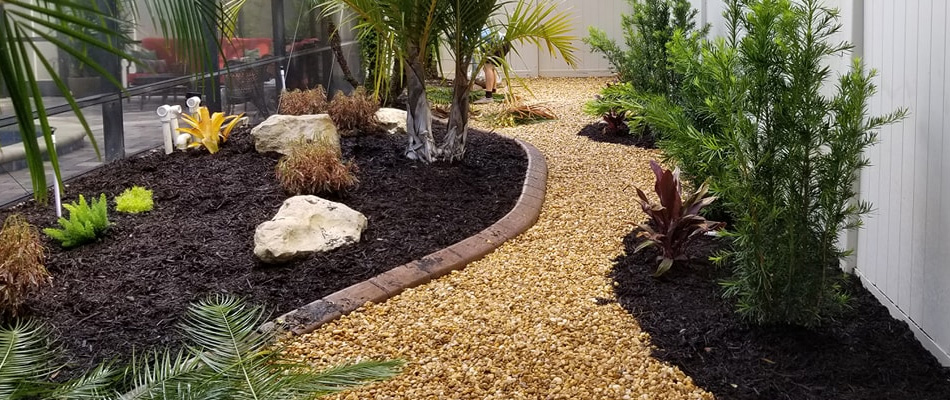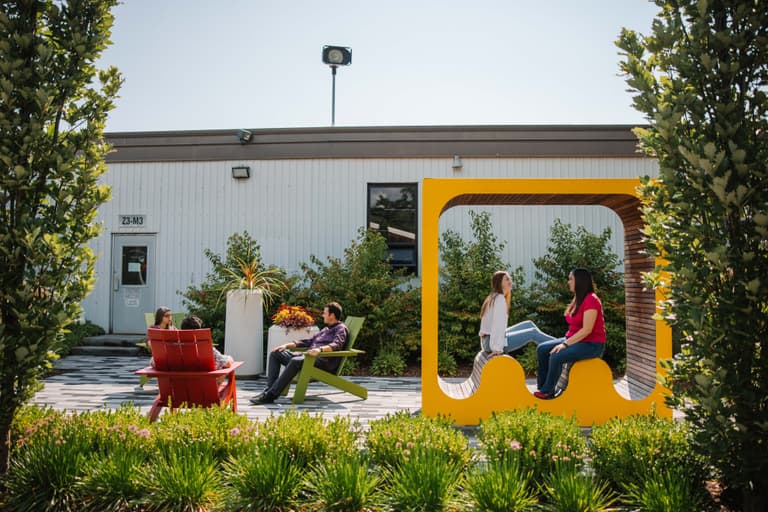How Hilton Head Landscapes can Save You Time, Stress, and Money.
How Hilton Head Landscapes can Save You Time, Stress, and Money.
Blog Article
Some Known Details About Hilton Head Landscapes
Table of ContentsThe Facts About Hilton Head Landscapes UncoveredMore About Hilton Head LandscapesThe Buzz on Hilton Head LandscapesThe Hilton Head Landscapes IdeasThe Hilton Head Landscapes IdeasUnknown Facts About Hilton Head LandscapesThe Definitive Guide for Hilton Head LandscapesLittle Known Facts About Hilton Head Landscapes.
Kind compatibility is additionally a significant part of unity in designone or more noticeably various types benefit contrast and emphasis, yet typically all other kinds must have some similarities for a linked look. Texture describes just how coarse or great the surface area of the plant or hardscape material feels and/or looks.
Instances of plants with rugged appearance include philodendrons, agaves, bromeliads, hollies, hands, and hydrangeas. Attributes that create great structure include tiny foliage; thin, strappy leaves (grasses) or high, slim stems; tiny, thick twigs and tiny branches; long stems (creeping plants); and small, delicate blossoms.
Getting The Hilton Head Landscapes To Work
The majority of plants are moderate appearance, in that they can not be described as having either rugged or great texture. Medium-textured plants act as a background to web link and unify the crude- and fine-textured plants.

To make an area feel smaller, put the coarse structures along the external border and the great appearances closest to the customer. The information of the crude appearance makes the plants appear closer and makes the space really feel smaller sized. The perceived appearance of plants can also change with the range from the plant.
All About Hilton Head Landscapes
Strong shades increase the comparison and make the structure appear coarser, while low-key shades can squash structure. Hardscape with a coarse texturesuch as extremely harsh rocks and bold, big timberstends to make all plant product show up a lot more medium distinctive. Developers usually create a texture study (Figure 8) on paper to help choose the setup of plant materials.
Number 8. Appearance research. Color in plant material and hardscape adds passion and variety to the landscape. Color is the most conspicuous component in the landscape and is normally the focus of many property owners; however, it is likewise one of the most short-term component, typically lasting only a few weeks a year for individual plants.
See This Report about Hilton Head Landscapes
A straightforward summary of the shade wheel consists of the 3 primaries of red, blue, and yellow; the three additional shades (a mix of 2 primaries) of green, orange, and violet; and 6 tertiary colors (a mix of one adjacent primary and secondary shade), such as red-orange. Shade theory describes the connection of colors to every other and how they ought to be used in a make-up.

Comparable (often called unified) color design are any three to five colors that are nearby on the shade wheel, such as red, red-orange, orange, yellow-orange, and yellow, or blue, blue-violet, and violet (landscapers in bluffton sc). The colors are associated per various other because they typically include 2 primaries blended to create a second and 2 tertiary shades, which means they share usual residential or commercial properties
They often tend to have high contrast between them. The most common collections are violet and yellow, red and environment-friendly, and blue and orange. Corresponding colors are frequently found naturally in blossoms; an usual pair is yellow and violet. Color is found in the blossoms, vegetation, bark, and fruit of plants.
An Unbiased View of Hilton Head Landscapes
Eco-friendly foliage in all its various shades is the leading shade by quantity, but various other colors record attention more easily due to the fact that of their high comparison to the color eco-friendly. Color is also found in structures, rocks, pavers, timber, and furnishings. A lot of colors in all-natural products, such as rock and wood, are normally muted and tend to be variations of brown, tan, and pale yellow.
Colors have residential or commercial properties that can influence feelings, spatial understanding, light quality, equilibrium, and emphasis. Great colors have a tendency to be calming and need to be used in areas for relaxation and tranquility.
Hilton Head Landscapes Fundamentals Explained
The "temperature" of colors can also influence the assumption of distance. Amazing shades tend to recede and are regarded as being farther away, making an area feel bigger. Cozy colors have a tendency to advance and are perceived as being more detailed, making a space really feel smaller sized. Color can likewise be used to catch interest and straight sights.
For instance, bright yellow, which has the highest possible intensity, likewise has a high contrast with all other colors (typically described as a "pop" of color) and should be conserved. A little amount of intense color has as much visual weight as a large amount of a more controlled or weaker color.
Comparable (in some cases called harmonious) color pattern are any kind of three to five colors that are nearby on the color wheel, such as red, red-orange, orange, yellow-orange, and yellow, or blue, blue-violet, and violet. The shades belong to each other because they normally consist of two primary see colors blended to form an additional and 2 tertiary shades, which means they share common residential or commercial properties.
What Does Hilton Head Landscapes Do?
They tend to have high comparison in between them. One of the most usual collections are violet and yellow, red and environment-friendly, and blue and orange. Corresponding shades are often located naturally in blossoms; an usual pair is yellow and violet. Color is found in the blossoms, vegetation, bark, and fruit of plants.
Eco-friendly foliage in all its different tones is the leading color by quantity, but various other shades catch focus extra conveniently due to their high contrast to the shade eco-friendly - landscape design hilton head - https://www.artstation.com/stevengonzales53/profile. Color is likewise discovered in structures, rocks, pavers, timber, and furnishings. Most colors in all-natural products, such as rock and wood, are usually muted and often tend to be variants of brown, tan, and light yellow
The Ultimate Guide To Hilton Head Landscapes
Colors have residential properties that can influence emotions, spatial perception, light top quality, balance, and focus. Amazing shades tend to be relaxing and should be utilized in locations for leisure and calmness.
The "temperature level" of shades can additionally influence the understanding of range. Cool shades tend to decline and are viewed as being further away, making an area really feel larger. Cozy shades tend to advancement and are viewed as being better, making a space really feel smaller sized. Color can also be used to capture interest and straight views.
Intense yellow, which has the greatest intensity, additionally has a high contrast with all various other shades (commonly explained as a "pop" of shade) and ought to be utilized sparingly. A percentage of extreme shade has as much visual weight as a huge quantity of a much more controlled or weak shade.
Report this page